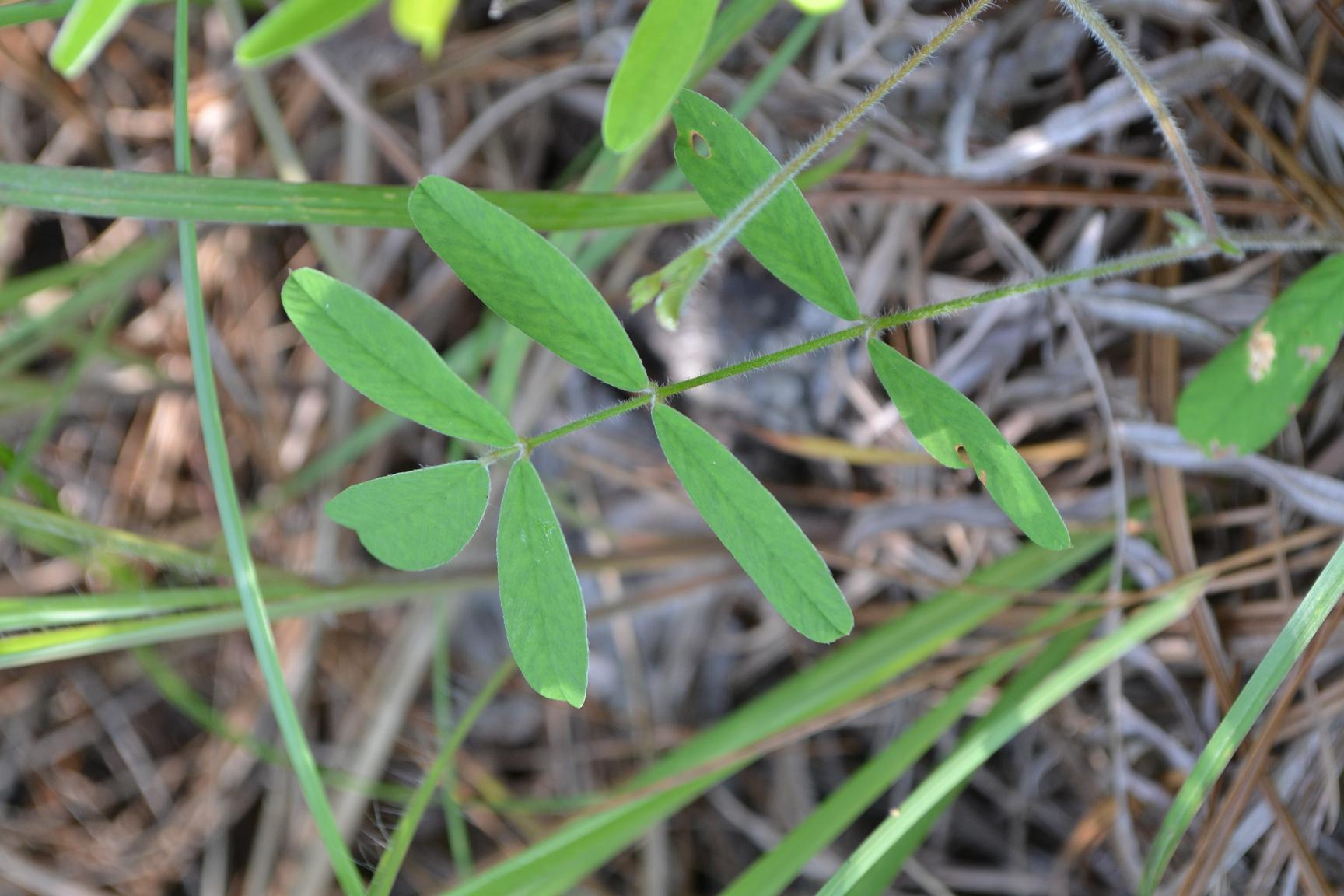Tephrosia florida
| Tephrosia florida | |
|---|---|

| |
| Photo taken by Kevin Robertson | |
| Scientific classification | |
| Kingdom: | Plantae |
| Division: | Magnoliophyta – Flowering plants |
| Class: | Magnoliopsida – Dicotyledons |
| Order: | Fabales |
| Family: | Fabaceae ⁄ Leguminosae |
| Genus: | Tephrosia |
| Species: | T. florida |
| Binomial name | |
| Tephrosia florida (F.G. Dietrich) C.E. Wood | |
Error creating thumbnail: Unable to save thumbnail to destination
| |
| Natural range of Tephrosia florida from USDA NRCS Plants Database. | |
Common name: Florida hoarypea
Contents
Taxonomic notes
Description
"Perennial herbs and shrubs with either monopodial or sympodial branching. Leaves odd-pinnate; leaflets 7-29 or rarely 1-41, entire, glabrous or pubescent above and always pubescent beneath, usually with prominent, parallel, secondary veins, estipellate, inflorescences terminal, axillary or apparently opposite a leaf, more or less racemose, with 2-10, papilionaceous, pedicellate flowers at each node with the cluster subtended by a bract and each pedicels subtended, 5-lobed, the lowers the long longest; petals clawed; stamens monadelphous or diadelphous. Legume sessile, linear, straight or slightly curved, usually compressed, nonseptate, dehiscing into 2 separate valves." - Radford et al 1964
"Perennial herb from a woody, cylindric taproot, stems prostrate to erect, to 6 dm long, sparsely to densely, appressed to spreading short-pubescent. Leaves 3-15 (28) cm long; leaflets 7-19, narrowly cuneate-oblong or narrowly to widely elliptic, mostly 1-5 cm long, (2) 5-18 mm wide, glabrous to moderately short-pubescent above and sparsely to moderately short-pubescent beneath. Principal inflorescences opposite the leaves, the smaller often terminal or axillary, 2-23 cm long, often longer than the neighboring leaf, with a conspicuously flattened peduncle and rachis and persistent, oblanceolate to liner bracts subtending pedicels 3-12 mm long. Calyx 3-4.5 mm long, appressed to spreading short-pubescent throughout; petals at first white, turning pink and then carmine (drying purplish), 10-16 mm long; stamens diadelphous. Legume 3-5 cm long, 4-6 mm broad, sparsely to moderately short-pubescent, trichomes 0.5 mm long or less." - Radford et al 1964
Distribution
Ecology
Habitat
Occurs in frequently burned upland pine-grassland communities, pine-palmetto-sand live oak flatwoods, upland turkey oak-longleaf pine woods, Quercus-Serenoa scrub, and pine-oak woods[1] The communities include soil types ranging from sandy loams to sand (Ultisols, Spodosols, Entisols) (KMR). Human disturbed habitats include roadsides and fields[1].
Associated genera and species: Galactia, Stylosanthes, Pityopsis, Rhynchosia, Desmodium, Spiranthes praecox, Cassytha, Rhynchosia, Indigofera, Opuntia, dwarf oaks, T. spicata, Alysicarpus ovalifolium , Desmodium lineatum, Lespedeza repens.[1].
Phenology
T. florida flowers in May, June, and August and fruits in May, June, August, October, and November[1].
Seed dispersal
Seed bank and germination
Fire ecology
It is a long-lived perennial that readily resprouts following frequent (up to annual) fires.
Pollination
Use by animals
Diseases and parasites
Conservation and Management
T. florida is generally limited to herbaceous communities with limited shade and maintained with frequent fire, suggesting that it is sensitive to fire exclusion.
Cultivation and restoration
Photo Gallery
References and notes
- ↑ 1.0 1.1 1.2 1.3 Florida State University Robert K. Godfrey database. URL: http://herbarium.bio.fsu.edu. Last accessed: June 2014. Collectors: Harry E. Ahles, Loran C. Anderson, A.F. Clewell, Richard R. Clinebell II, M. Darst, R.K. Godfrey, J. Haesloop, R. Komarek, R. Kral, S.B. Jones, Samuel B. Jones Jr., O. Lakela, R.A. Norris, R.C. Phillips, H.R. Reed, J.D. Reynolds, A.B. Seymour, Cecil R. Slaughter, John K. Small, Jean Wooten. State and Counties:Florida: Calhoun, Collier, Columbia, Flagler, Franklin, Gadsden, Jackson, Leon, Liberty, Madison, Okaloosa, Santa Rosa, Wakulla, Washington. Georgia:Thomas. Mississippi: Lamar, Jackson, Pearl River. North Carolina: Scotland.